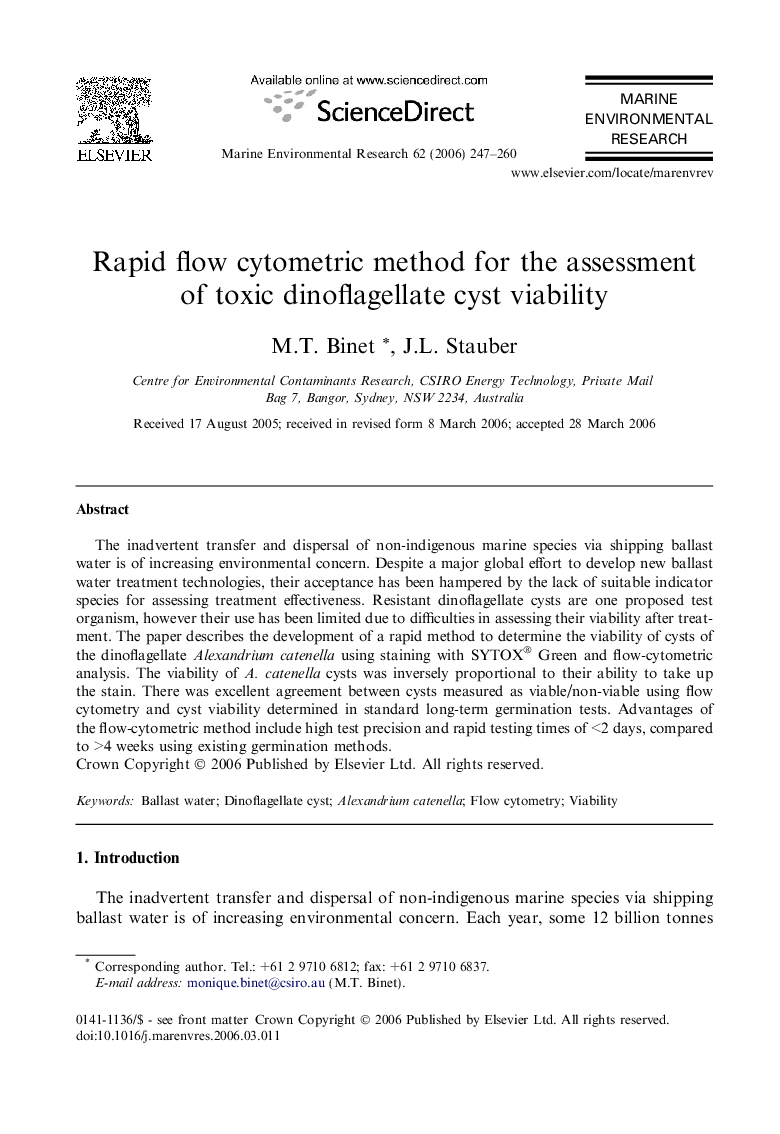| Article ID | Journal | Published Year | Pages | File Type |
|---|---|---|---|---|
| 4551911 | Marine Environmental Research | 2006 | 14 Pages |
Abstract
The inadvertent transfer and dispersal of non-indigenous marine species via shipping ballast water is of increasing environmental concern. Despite a major global effort to develop new ballast water treatment technologies, their acceptance has been hampered by the lack of suitable indicator species for assessing treatment effectiveness. Resistant dinoflagellate cysts are one proposed test organism, however their use has been limited due to difficulties in assessing their viability after treatment. The paper describes the development of a rapid method to determine the viability of cysts of the dinoflagellate Alexandrium catenella using staining with SYTOX® Green and flow-cytometric analysis. The viability of A. catenella cysts was inversely proportional to their ability to take up the stain. There was excellent agreement between cysts measured as viable/non-viable using flow cytometry and cyst viability determined in standard long-term germination tests. Advantages of the flow-cytometric method include high test precision and rapid testing times of <2 days, compared to >4 weeks using existing germination methods.
Related Topics
Physical Sciences and Engineering
Earth and Planetary Sciences
Oceanography
Authors
M.T. Binet, J.L. Stauber,
